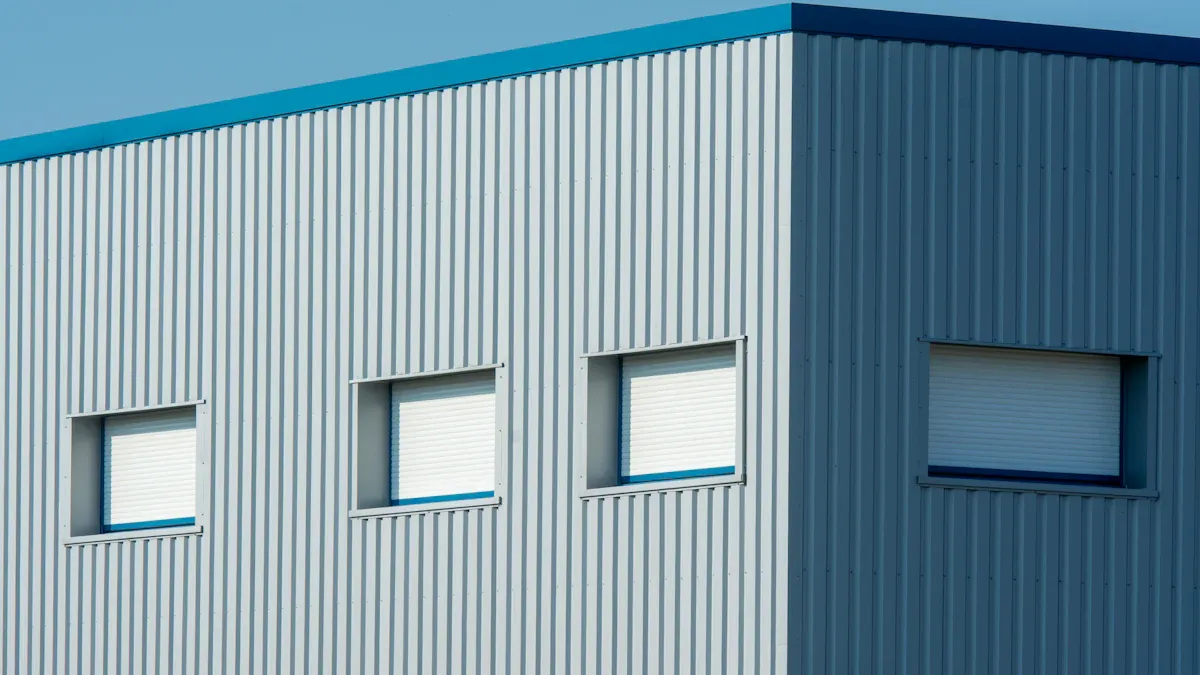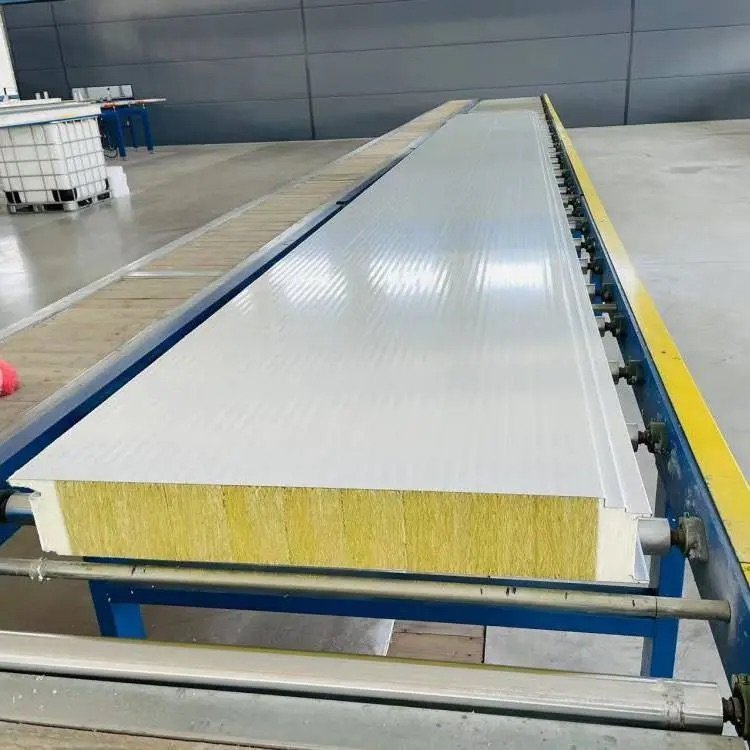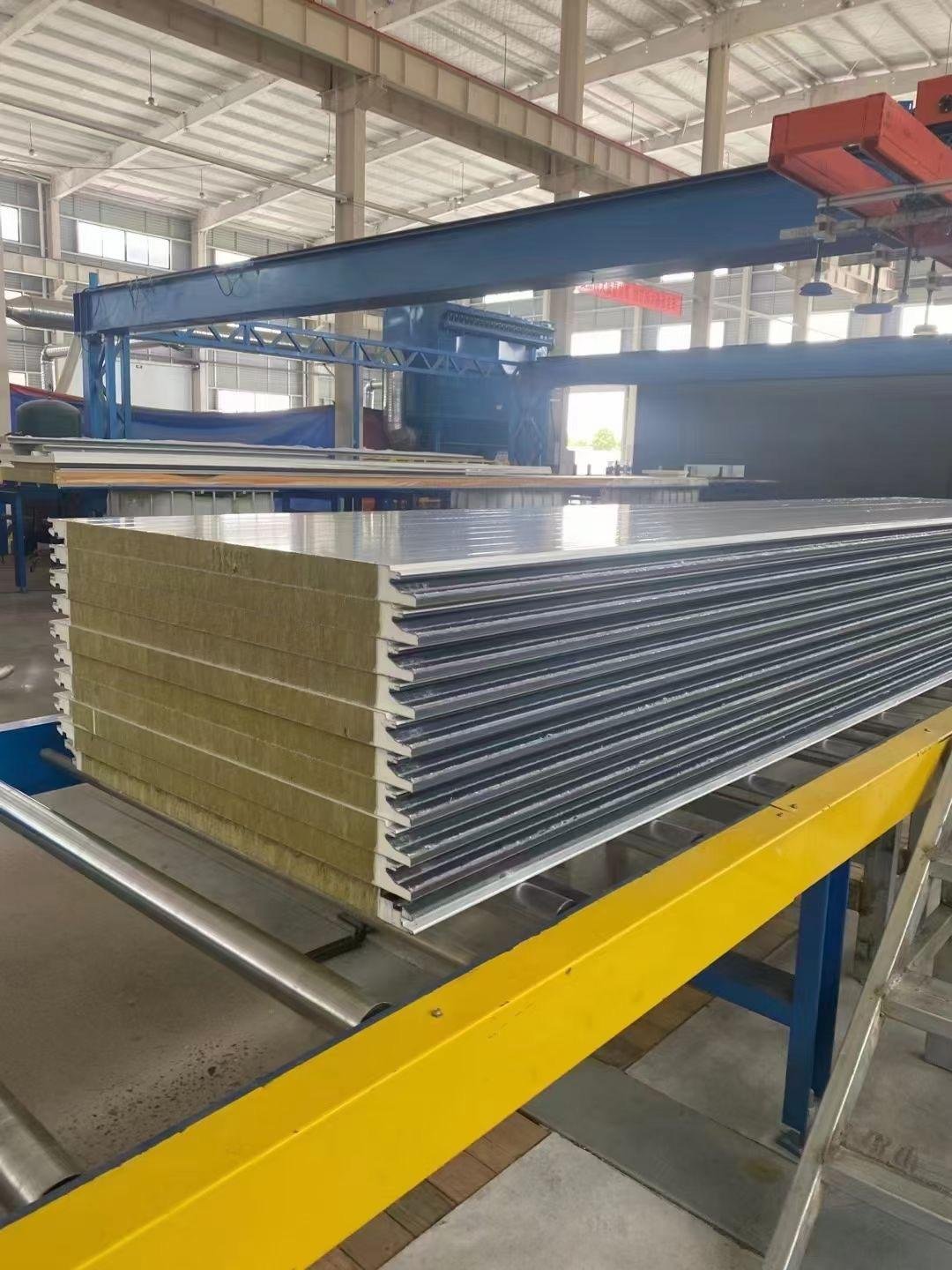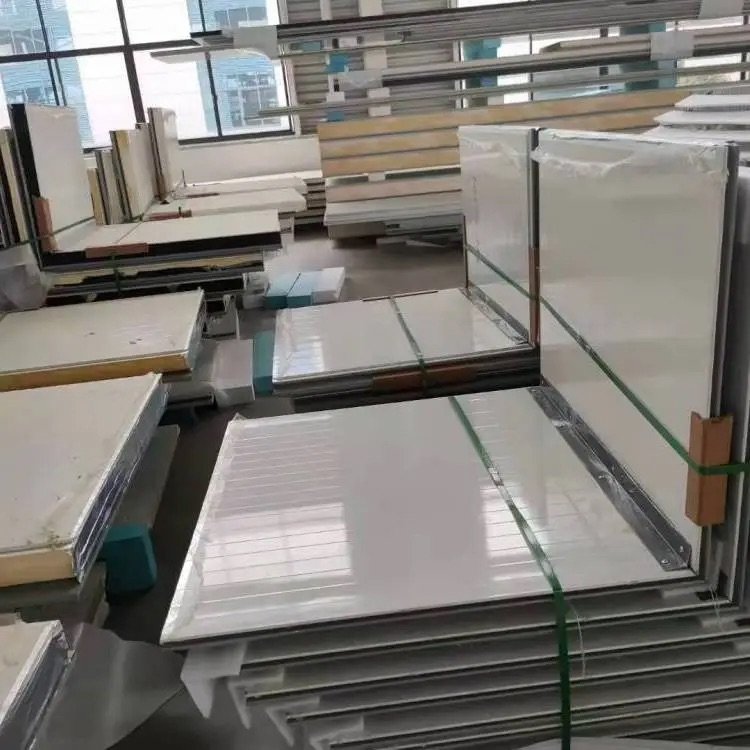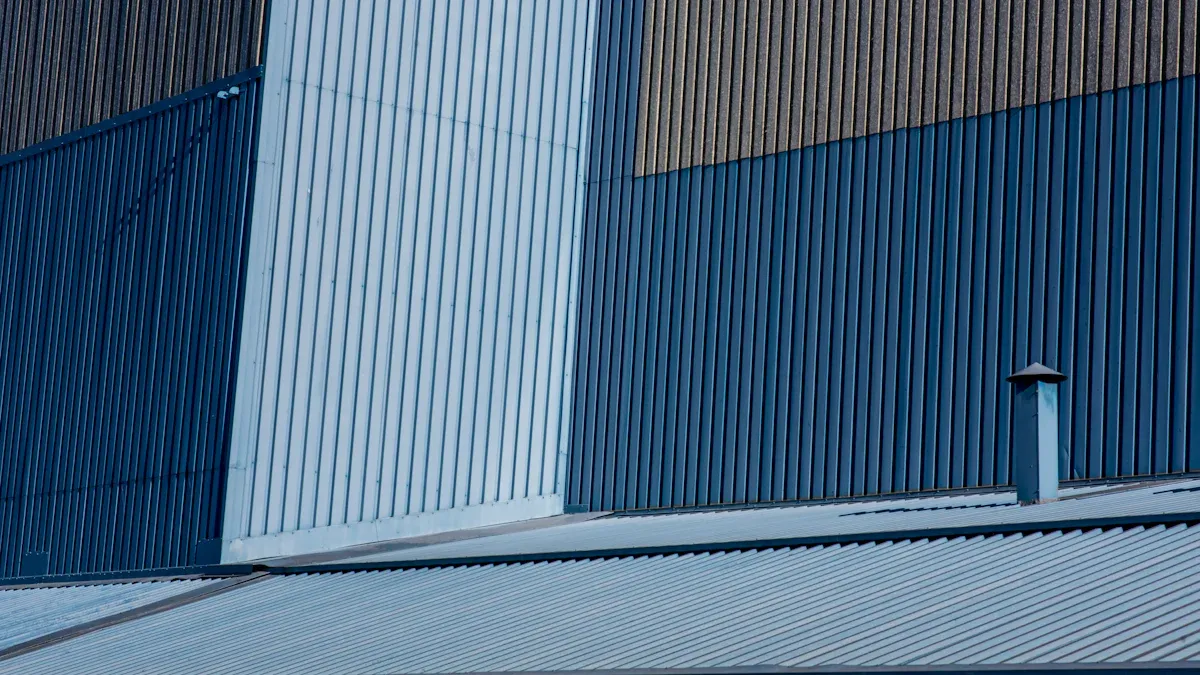
EPS sandwich panels are light wall materials that save energy in buildings. These panels have two strong outer layers with a foam core made of expanded polystyrene (EPS). This design keeps heat in or out while staying lightweight.
Buildings with EPS panels can use 30% less energy than regular materials. Research shows these panels lower energy use a lot and meet today’s energy rules.
Their light weight makes them simple to carry and set up. They are strong, affordable, and help save energy in construction projects.
Key Takeaways
EPS sandwich panels help save energy by stopping heat loss. This lowers utility bills.
They are light, so they are quick and easy to install. This saves time and money on labor.
These panels are tough and long-lasting. They work well for walls and roofs in buildings.
EPS panels are good for the environment. They can be recycled and support green building goals.
They keep spaces warm or cool and block noise. This makes indoor areas more comfortable.
What Makes Up an EPS Sandwich Panel?

Outer Layers and Their Job
The outer layers of EPS panels are very important. They are usually made from strong metals like steel or aluminum. These layers protect the panel from things like water, sunlight, and chemicals.
The metal layers resist damage from acids and solvents.
They also don’t wear out easily under sunlight, great for roofs.
By holding the foam core, they make the panel stronger.
This design keeps the panel tough and dependable in tough conditions. That’s why EPS panels are often used in prefab buildings.
Core Material: Expanded Polystyrene (EPS)
The middle part of the panel is made of EPS foam. This foam is light but great at keeping heat in or out. It has tiny air pockets that help with insulation.
Insulation is measured by R-value, showing how well it blocks heat.
A higher R-value means better insulation, saving energy indoors.
Using EPS makes the panels good at insulation, light, and easy to use.
How Bonding Keeps Panels Strong
The way the layers stick together is very important. The foam core is glued tightly to the metal layers with special glue. This makes the panel strong enough to hold heavy loads.
Glue Type | Strength Comparison | Notes |
|---|---|---|
Epoxy Glue | Layers came apart before max strength was hit | |
HPEPC Glue | Stronger bonding | Layers stayed together even under high stress |
Panels with good glue stay strong under pressure. This makes them reliable for walls, roofs, and more.
Key Properties of EPS Sandwich Panel

Thermal Insulation and Energy Efficiency
EPS sandwich panels help keep indoor spaces cozy by stopping heat transfer. The core, made of expanded polystyrene, traps air in tiny pockets. Air doesn’t carry heat well, so these panels are great insulators. This helps keep the inside temperature steady, no matter the weather.
The panels have high R-value, meaning they block heat well.
They save energy by reducing heat loss, cutting utility costs.
Buildings with these panels use less energy, supporting green goals.
More people want energy-saving materials now. The EPS panel market is expected to grow from $6.5 billion in 2023 to $11.2 billion by 2032, with a yearly growth of 6.2%. This shows their value in eco-friendly building.
Strength and Load-Bearing Capacity
Even though they are light, EPS panels are very strong. Their strength comes from how well the core and outer layers stick together. They can hold heavy loads, making them good for walls, roofs, and dividers.
Engineers check panels to ensure they meet safety rules.
Studies aim to improve their use in different projects.
They resist earthquakes and strong winds, great for disaster-prone areas.
These panels are safe and long-lasting for homes and businesses.
Fire Resistance and Safety Standards
Safety matters in building, and EPS panels meet fire safety rules. Many have self-extinguishing features to stop flames from spreading. For instance, some panels with PIR foam cores are FM Approved and CE marked with a fire class of B, s2, d0. Others, like stone wool panels, are non-combustible and meet EXT-A60 standards.
These certifications prove EPS panels offer good fire safety. Picking certified panels makes your building safer and follows the rules.
Sound and Water Protection
EPS sandwich panels block noise and keep water out. This makes them a great choice for many building projects. They help make indoor spaces quieter and more comfortable by reducing sound and stopping water damage.
These panels are good at blocking noise. With a sound rating of Rw = 23-24 dB, they lower noise levels a lot. This is helpful for homes near busy streets or buildings in loud areas. They help keep the inside peaceful and calm.
Water resistance is another important feature of EPS panels. The foam core does not soak up water because it repels it. This stops problems like mold or damage to the building. By keeping water out, these panels stay strong and last longer.
Here’s a simple table about their sound and water protection:
Type of Measurement | Value | What It Means |
|---|---|---|
Noise Blocking | Rw = 23-24 dB | Shows how well it reduces sound, great for quiet spaces. |
Water Resistance | Water-repelling | Foam core keeps water out, stopping damage and mold. |
With both noise and water protection, EPS panels make buildings safer and more comfortable. These features are perfect for today’s construction needs.
Benefits of EPS Sandwich Panel
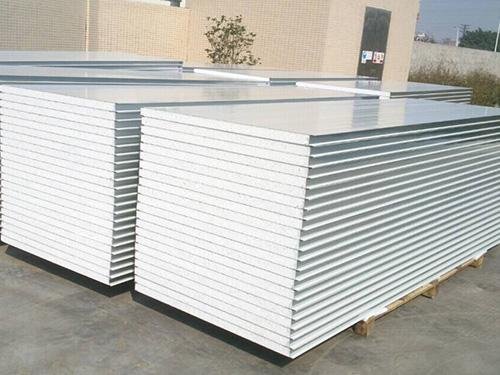
Lightweight and Easy Installation
EPS sandwich panels are very light, making them easy to move. They have strong outer layers and a light foam core inside. This design keeps them strong but not heavy, so they’re simple to use.
Light panels make building faster and easier.
Pre-made panels are quick to put together, saving time and money.
Their strength and lightness make them easy to carry and install.
Feature | What It Means |
|---|---|
Lightweight and Easy to Move | Light panels help finish building faster and lower labor costs. |
Pre-Made Panels | Ready-made panels are quick to set up, making installation faster and easier. |
Using EPS panels saves time and effort while keeping buildings strong.
Cost-Effectiveness and Affordability
EPS sandwich panels are a smart choice for saving money. They cost less than many other building materials but still work well. This makes them great for projects with tight budgets.
Feature | What It Means |
|---|---|
Cost-Saving | EPS panels are a cheaper option for many building projects. |
Popular in Budgets | They are often used where saving money is very important. |
Budget-Friendly | Perfect for projects needing good quality at a lower price. |
These panels help lower building costs without losing quality. They are a good choice for homes and businesses.
Environmental Sustainability
EPS sandwich panels are good for the environment. They can be recycled, which helps reduce waste. They also save energy by keeping buildings warm or cool, lowering energy use.
These panels help cut down on waste during building.
They save energy, helping buildings get green certifications like LEED.
By stopping heat transfer, they keep indoor spaces comfy and use less energy.
Using EPS panels helps protect the planet. They save energy and reduce waste, making them great for eco-friendly projects.
Versatility in Design and Application
EPS sandwich panels are flexible and useful for many building projects. Their light weight and customizable design make them great for various uses, from homes to big infrastructure.
Examples of Versatile Applications
Factory Construction: These panels work well for factory roofs and walls. They keep machines running efficiently by improving insulation.
Acoustic Barriers: In cities, they help reduce noise pollution. Their sound-blocking ability creates quieter spaces.
Transportation Projects: Train stations and airports benefit from their energy-saving and noise-reducing features.
Bridge Construction: Lightweight panels with strong cores are ideal for pedestrian bridges. They add strength without extra weight.
Benefits Across Different Projects
Application Type | Example Use | Benefits |
|---|---|---|
Used in earthquake-prone areas for stability and energy savings. | Lightweight, great insulation, and lower energy bills. | |
Residential Complex | Added to roofs for better insulation and stronger structure. | Improved heat control, durability, and longer-lasting buildings. |
Factory Construction | Used for walls and roofs, speeding up building time. | Better insulation for machines and faster construction. |
Infrastructure Projects | Used in sound barriers and transport hubs like train stations. | Saves energy, blocks noise, and works well for lightweight structures like bridges. |
Why Choose EPS Sandwich Panels?
EPS sandwich panels can be adjusted to fit different project needs. For example, they are great for tall buildings needing stability and energy efficiency. In homes, they improve insulation and make structures stronger. Their flexibility makes them suitable for industrial, commercial, or residential designs.
By picking these panels, you get a material that is both functional and adaptable. Whether insulating a factory or building a bridge, EPS sandwich panels are a dependable and efficient choice.
Uses of EPS Sandwich Panel

Building: Walls, Roofs, and Dividers
EPS sandwich panels work well in many building parts. They are used for walls, roofs, and dividers. These panels are light but very strong, perfect for construction. They keep indoor spaces comfortable by stopping heat transfer. For walls, they provide support and insulation. On roofs, they help keep buildings cool in summer and warm in winter. As dividers, they block noise, creating quiet and private areas. Their flexibility makes them a top choice for homes, offices, and factories.
Cold Rooms and Refrigeration
EPS sandwich panels are great for cold rooms and refrigeration. The foam core inside has excellent insulation abilities. This keeps cold rooms at low temperatures, keeping food fresh. These panels also save energy by reducing heat transfer. They resist moisture, stopping condensation and mold. Whether for small fridges or big cold warehouses, these panels are reliable and energy-saving.
Pre-Made and Modular Buildings
Pre-made and modular buildings use EPS sandwich panels a lot. These panels are light, making them easy to move and set up. They save time because they are ready to install. They are also strong and energy-efficient, which lowers costs.
Feature | Benefits of EPS Panels |
|---|---|
Saves Energy | Lowers electricity bills |
Strong | Lasts longer, fewer repairs needed |
Easy Care | Needs little maintenance, saving money |
Adds Value | Improves property worth with quality and durability |
Using EPS panels in modular buildings creates strong, energy-saving, and low-maintenance structures. These features make them a favorite for modern construction projects.
Industrial and Commercial Uses
EPS sandwich panels are strong, insulated, and easy to install. These features make them popular for industrial and commercial buildings. They solve many problems in modern construction projects.
Uses in Industrial Projects
In factories, EPS panels work well for temperature control and quick building. Cold storage warehouses use them for great insulation. They can reach U-values as low as 0.18 W/m²K, better than older materials. Car part factories also use these panels to build faster. For example, a 50,000-square-meter factory in Pune was built in five months, cutting building time by 40%.
These panels also make industrial buildings safer and stronger. In Japan, buildings with EPS panels handled earthquakes 20% better. This makes them great for areas with natural disasters.
Uses in Commercial Buildings
Warehouses, stores, and offices often use EPS panels. In Florida, they are used on warehouse roofs because they resist strong winds over 150 psf. Cold chain facilities in North America also prefer EPS panels. About 62% of new walls in these facilities use this material. The panels stop moisture, keeping them effective in tough weather.
Fire safety is also important in commercial buildings. In Seoul, a project replaced old insulation with fire-safe EPS panels. This lowered the flame spread index from 75 to under 25, meeting new safety rules.
Application Area | Example Use | Key Benefits |
|---|---|---|
Cold Storage Warehouses | Used in cold facilities for better insulation | Achieves U-values as low as 0.18 W/m²K, better than older materials. |
Automotive Parts Facility | Built a 50,000-square-meter factory in 5 months | Cuts building time by 40%, great for fast projects. |
Earthquake-Resistant Structures | EPS panels in Japan improved earthquake safety | Handles 20% more seismic load, good for disaster-prone areas. |
Hurricane Reconstruction | Used for warehouse roofs in Florida after hurricanes | Resists wind uplift over 150 psf, ideal for stormy areas. |
Cold Chain Facilities | 62% of new cold facility walls use EPS panels | Stops moisture and keeps performance steady in extreme weather. |
Fire Safety Compliance | Seoul project replaced old insulation with fire-safe EPS panels | Lowered flame spread index to under 25, meeting safety codes. |
EPS sandwich panels are durable, energy-saving, and meet safety rules. They are a smart choice for modern industrial and commercial buildings.
EPS sandwich panels are light, cost-effective, and energy-saving. They are essential for modern buildings. The foam core keeps heat in or out. The outer layers make them strong and fire-safe. These panels are easy to install and save money, helping green building efforts.
They are eco-friendly, with no harmful chemicals and energy-saving features. Whether for houses, factories, or modular buildings, EPS panels are a dependable choice for efficient and eco-friendly spaces.
FAQ
How long do EPS sandwich panels last?
EPS sandwich panels can last more than 20 years. Their lifespan depends on how they are installed and cared for. Good maintenance, like cleaning and checking them, helps them last longer.
Why are EPS sandwich panels good for saving energy?
The foam core in EPS panels traps air. This stops heat from moving through the panel. It keeps buildings warm or cool and lowers energy bills. High R-values show they are great for saving energy.
Can you recycle EPS sandwich panels?
Yes, you can recycle EPS sandwich panels. The foam and metal parts can be separated and reused. Recycling helps reduce waste and supports eco-friendly building.
Do EPS sandwich panels work in bad weather?
EPS sandwich panels handle bad weather well. They can resist strong winds, heavy rain, and big temperature changes. They also keep buildings comfortable in extreme climates.
What should you check before buying EPS panels?
Check for certifications like FM Approval or CE marking. Look for fire safety ratings like B, s2, d0. These show the panels are safe, high-quality, and meet building standards.

